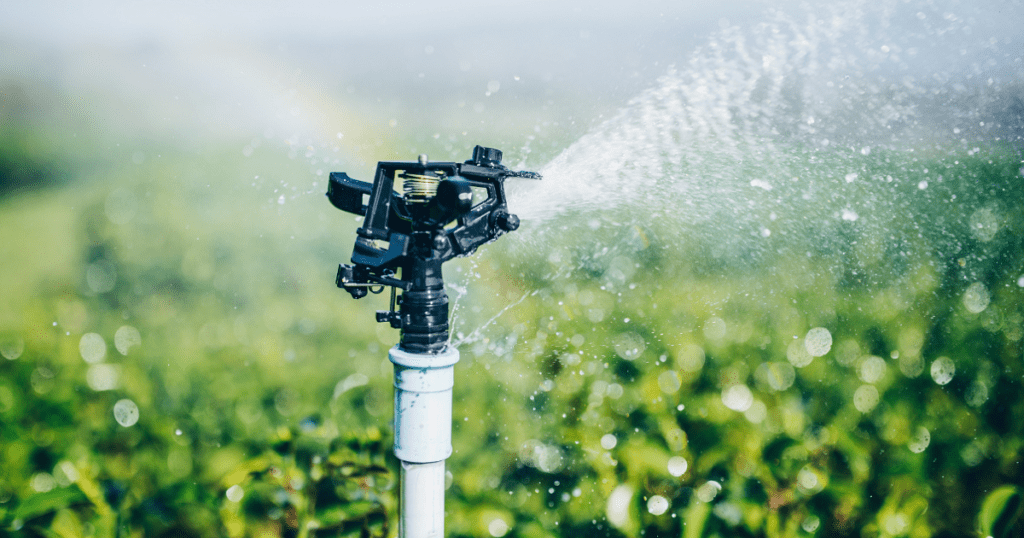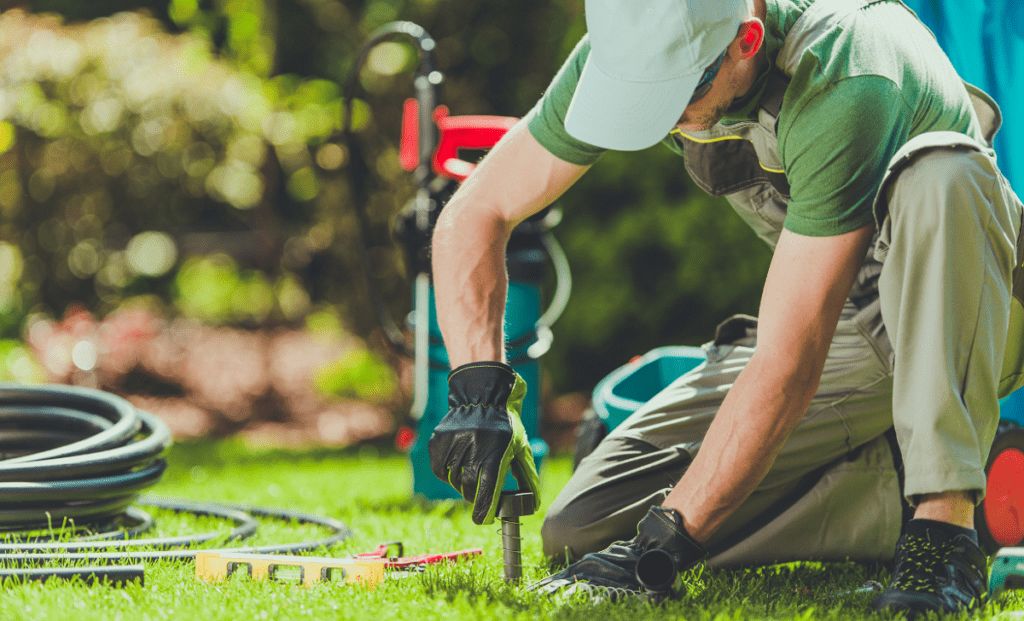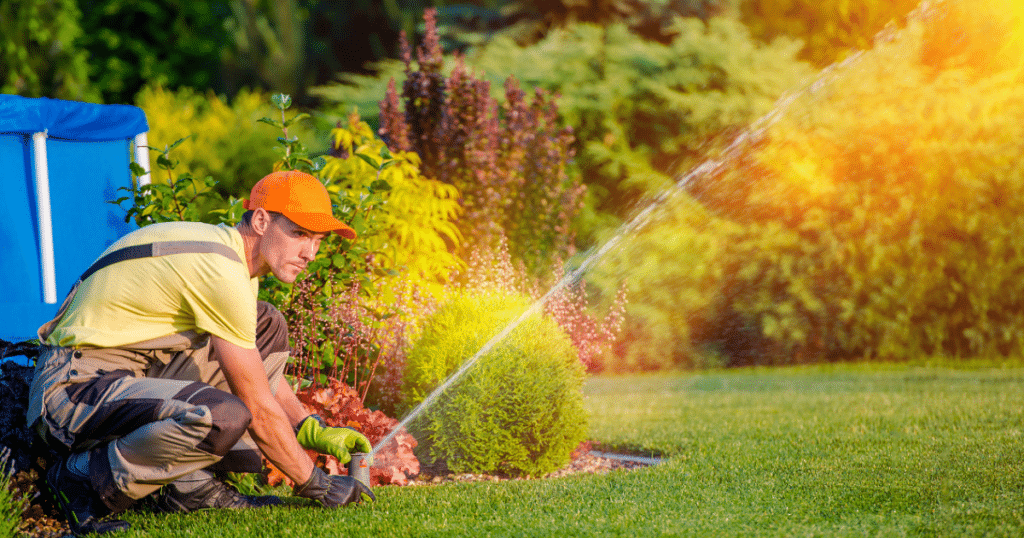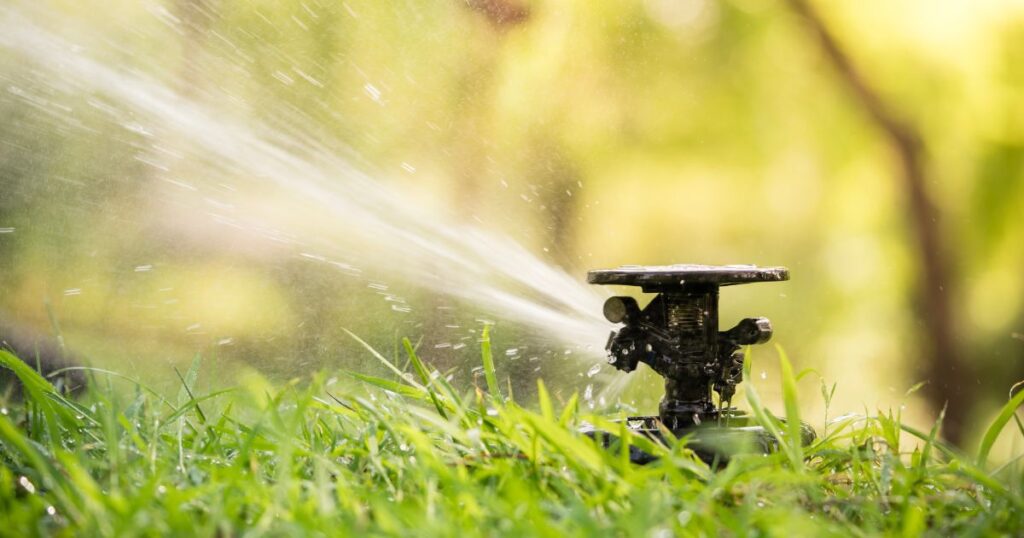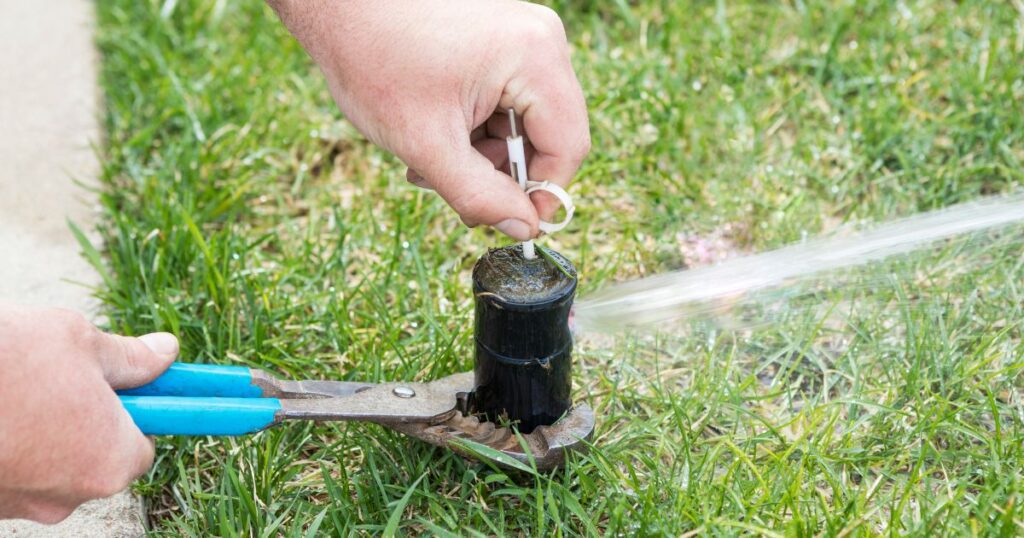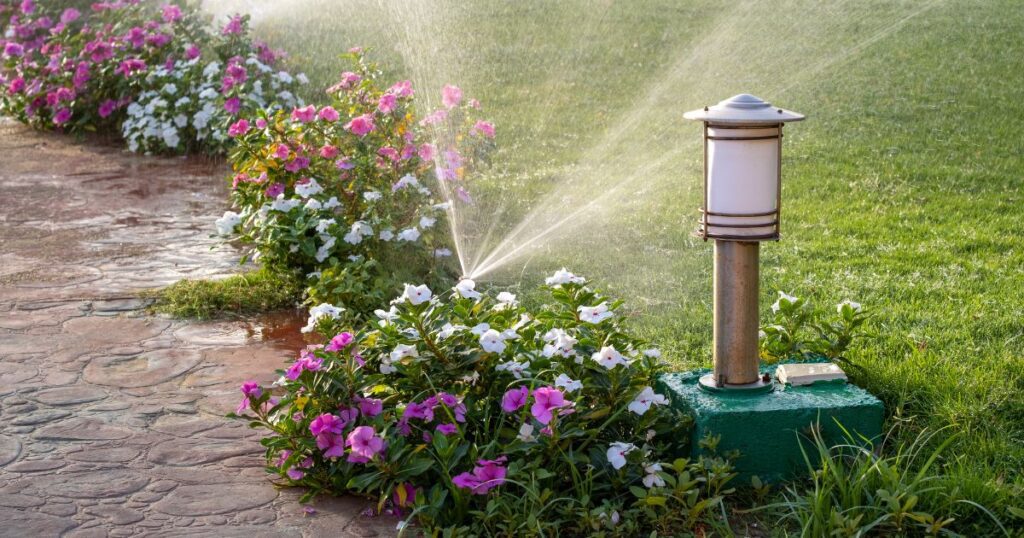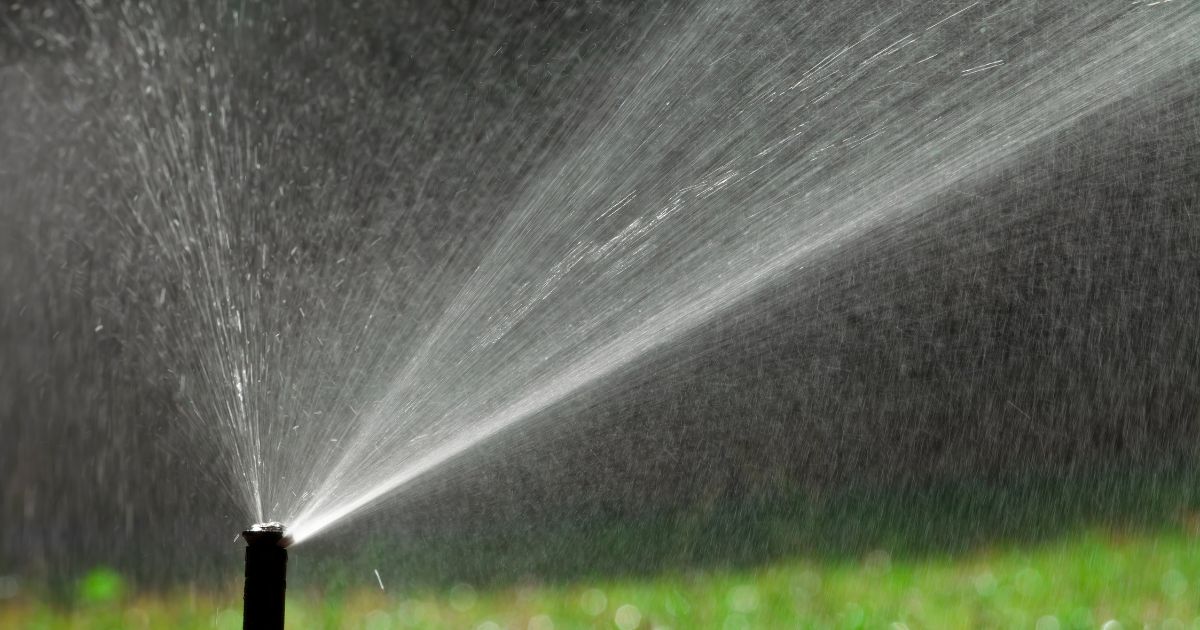
Are your sprinkler lines playing hide-and-seek? Wondering how to find sprinkler lines fast? Don’t worry, we’ve got the ultimate guide to help you find them! Discovering the hidden paths of your sprinkler lines may seem like a daunting task, but fear not because we’re about to unveil some fantastic tips and tricks that will make locating those elusive lines a breeze. So put on your detective hat and get ready for an adventure filled with mystery, intrigue, and, of course, the thrill of finding those sneaky sprinkler lines!
To find sprinkler lines, you can use a few methods. First, visually inspect your yard for any signs of buried sprinkler heads or exposed pipes. You can also use a metal detector to detect the presence of underground pipes. Lastly, you can contact a professional sprinkler service to use specialized equipment like ground-penetrating radar to accurately locate the sprinkler lines.
The Importance of Finding Sprinkler Lines
Sprinkler systems are essential for maintaining a lush and healthy lawn or garden. However, over time, pipes can become damaged or worn out, causing leaks or low water pressure. This is why it’s crucial to locate your sprinkler lines before making any repairs or modifications.
Finding your sprinkler lines can also help you save money on your water bill. By identifying leaks early on, you can prevent wasted water and keep your lawn looking its best without overspending.
How To Find Sprinkler Lines: The Various Methods
There are several methods you can use to find your sprinkler lines. Some methods require specialized equipment, while others can be done with simple tools that you may already have at home. One of the most straightforward methods is visual inspection.
This involves walking around the area where your sprinklers are located and looking for small metal poles (sprinkler heads) sticking out of the ground. Once you find a sprinkler head, follow the line that leads to it until you reach the control valve box.
Repeat this process for each sprinkler head until you have identified all of the pipes in your system. Another method is using a metal detector.
Metal detectors work by emitting an electromagnetic field that detects metallic objects beneath the soil surface. By walking around the area where your sprinklers are located with a metal detector, you can identify any buried metal pipes.
If none of these methods work well enough for finding all of your sprinklers’ locations, consider hiring a professional locator service instead that uses specialized equipment to find underground pipes like those in a sprinkler system. No matter which method you choose, it’s important to know that finding buried pipes takes time and patience – but it will save lots of money in the long run!
Method 1: Visual Inspection
Scanning for Sprinkler Head Locations
Visual inspection is the most common and simplest method for determining the location of sprinkler lines. It involves scanning the area for sprinkler heads and following the lines that lead to them. To begin with, walk around your property and examine areas where you think there might be sprinkler systems installed, such as lawns or gardens.
The best way to ascertain where your sprinkler heads are located is by looking at patches of grass that appear greener or lusher than others. When you find a sprinkler head, check its shape and size to determine the type of system used in your yard.
For instance, rotating spray heads have a circular or rectangular shape with an arc-shaped spray pattern, while fixed spray nozzles have a small radius with a more concentrated spray pattern. By understanding these differences, it becomes easier to identify how they’re connected.
Following Lines by Tracing Sprinklers
Once you have located one or two of the sprinklers on your property, carefully follow their path using marker flags or stakes placed along their paths. This will help you create an outline of where underground piping may exist.
Bear in mind that some sections may be hidden beneath soil or other materials such as rocks or mulch beds. In this case, it’s important to carefully dig around these areas until you find them.
Pitfalls When Visual Inspection Does Not Work
While visual inspection can successfully locate many underground pipes, there are some limitations. Sometimes obstructions such as trees or concrete structures can prevent successful visual identification of all sprinklers on your property. In addition, if all your sprinklers are covered up by soil from years of use without maintenance practices like flushing out debris routinely, this could make it difficult to trace their locations visually – in such cases, following the lines from one sprinkler to another may not be possible.
If some of your sprinklers are installed in areas with limited visibility or coverage, such as behind bushes or under decks, this method may not work. In such situations, you might have to opt for other methods that can detect underground piping more accurately.
Method 2: Use a Metal Detector
Pinpointing Sprinkler Lines with a Metal Detector
A metal detector can be an effective tool for locating buried sprinkler lines. The detector works by emitting an electromagnetic field that responds to metal objects in the ground.
As the detector is moved over the ground, it will make a sound or provide some other indication when it detects metal. To use a metal detector to find sprinkler lines, start by turning on the device and adjusting the sensitivity setting.
Next, hold the detector close to the ground and move it slowly back and forth over the area where you suspect the sprinkler line is located. When you get close to where the line is buried, you should hear a signal from your device indicating that there is metal present.
Metallic vs. Non-metallic Pipes
It’s important to note that not all sprinkler lines are made of metal. In fact, many newer irrigation systems use pipes made from non-metallic materials such as PVC or polyethylene.
Unfortunately, these types of pipes will not be detected by most metal detectors since they do not contain any metallic components. If you suspect that your sprinkler lines are made from non-metallic materials, you may need to try one of the other methods discussed in this article or consider hiring a professional locator service who can use specialized equipment specifically designed for detecting non-metallic pipes.
RELATED: How to Move Sprinkler Heads: Best Guide In 2023
Factors Affecting Detection Accuracy
Even if your sprinkler lines are made from metallic materials and can be detected with a standard metal detector, there are still several factors that can affect detection accuracy. These include soil type (some soils may produce more false signals), depth (the deeper the pipe is buried, the weaker its signal will be), and interference from nearby structures or underground utilities.
To increase your chances of accurate detection with a metal detector, it’s important to choose a high-quality device with adjustable sensitivity settings and to thoroughly read the manufacturer’s instructions before using it. Additionally, make sure you clear the area of any debris or other metallic objects that could produce false signals.
Tips for Best Results
When using a metal detector to find sprinkler lines, there are several tips you can follow to get the best results. First, try to locate as many sprinkler heads as possible since these will give you an idea of where the lines are likely located. Use flags or spray paint to mark each location so you can easily see where you have searched.
Next, be patient and take your time when searching for the sprinkler lines. Move the detector slowly over the ground in a systematic pattern and listen carefully for any signals from your device.
If you do detect a signal, mark the spot with a flag and move on to another area before returning to dig up that section. Always exercise caution when digging around buried pipes or utility lines.
Before digging, call your local utility company and have them mark any underground utilities so you can avoid damaging them accidentally. Additionally, wear protective gear such as gloves and safety glasses when digging trenches or excavating around buried pipes.
Hiring a Professional Locator Service
The Benefits of Hiring a Professional Service
While it is possible to find sprinkler lines on your own, using a professional locator service can save you time and effort. These services use specialized technology that can detect underground pipes, even if they are made of non-metallic materials.
Moreover, professionals have experience in locating sprinkler systems and are less likely to cause damage to the pipes or other utilities. Another benefit of hiring a professional is that they can locate hard-to-find pipes and complex systems.
This can include pipes that are buried deep underground or those that run underneath buildings or other structures. Trying to locate these types of pipes on your own can be time-consuming and challenging.
What to Expect from a Professional Locator Service
When you hire a professional locator service, the first step will be an assessment of your property and sprinkler system. They will ask for information about the location and layout of your sprinkler system, as well as any known issues you may be experiencing.
Once they have assessed the situation, the professionals will use specialized equipment such as ground penetrating radar (GPR) or electromagnetic locators to detect the location of your sprinkler lines. These methods work by sending signals into the ground, which bounce off any buried objects and provide information about their location.
The Cost of Hiring a Professional Locator Service
Hiring a professional locator service is generally more expensive than trying to locate the pipes on your own. However, this cost can vary depending on several factors such as the size and complexity of your system, as well as where you live.
It’s important to note that while hiring a professional may seem like an unnecessary expense at first glance, it could actually save you money in the long run. By avoiding damage to your sprinkler system or other utilities during excavation work, you won’t have to pay for costly repairs in the future.
Choosing the Right Professional Locator Service
When choosing a professional locator service, it’s important to consider their level of experience and reputation. Look for a company that has a track record of successfully locating sprinkler lines and other underground utilities.
You should also ask for references or read online reviews before hiring a company. This can help you get an idea of their level of expertise and customer satisfaction.
Additional Tips and Considerations
Safety Precautions When Digging Around Buried Pipes
When you are digging around your property, it’s important to take safety precautions to prevent any damage or injury. Before you start digging, make sure to mark the area where the sprinkler lines are buried.
You can use flags or spray paint for this purpose. This will help you avoid accidentally hitting the pipes while digging.
It’s also a good idea to wear protective gear such as gloves, eye protection, and sturdy work boots while digging. If you’re using power tools like a shovel or pickaxe, be careful not to hit the pipes with them.
If you do accidentally hit a sprinkler line while digging, turn off the water supply immediately. This will help prevent any further damage to your system.
Checking with Local Utility Companies Before Digging
Before starting any excavation work on your property, it’s important to contact local utility companies and have them mark all of their underground facilities in the area where you plan to dig. These could include gas lines, electric lines, and cable wires.
By doing this, you can avoid damaging these facilities during your excavation work which could cause serious harm or even death. It is also required by law in most areas before any excavation work can start.
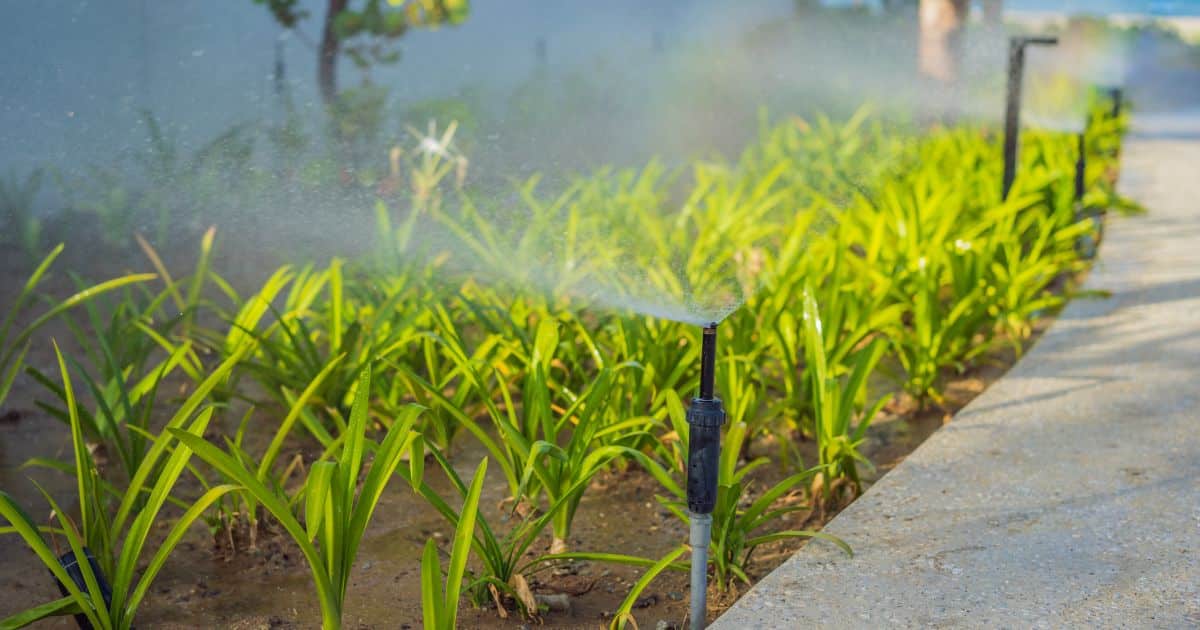
Knowing the Layout of Your Sprinkler System Before Making Any Repairs or Modifications
Before making any repairs or modifications to your sprinkler system, it’s important to know its layout in order to avoid damaging other pipes or components of the system. You should have a schematic diagram of your system that shows where each sprinkler head is located and where each pipe runs.
If you don’t have one already, create one by drawing out the layout of your sprinkler system on paper. When making repairs or modifications, be sure that you have turned off the water supply to the system.
This will help prevent any damage to your pipes while you’re working on them. Remember that even a small error in repair or modification work can cause extensive damage to your entire sprinkler system, so it’s best to proceed cautiously and seek the help of a professional if necessary.
RELATED: How to Find a Buried Sprinkler Head: A Comprehensive Guide
Frequently Asked Questions
How do you find sprinkler lines without digging?
To find sprinkler lines without digging, you can use a variety of methods such as using a metal detector to locate metallic components of the system, utilizing ground-penetrating radar (GPR) to detect underground objects, or using an electronic cable/pipe locator that can detect the signal emitted by buried irrigation lines.
How deep are sprinkler lines?
The depth of sprinkler lines can vary depending on the installation, but they are typically buried around 6 to 12 inches below the surface. However, in colder climates, they may be buried deeper to protect them from freezing.
How do you trace a sprinkler wire?
To trace a sprinkler wire, you can use a wire tracer or toner, which emits a signal onto the wire that can be detected using a receiver. By following the signal with the receiver, you can track the path of the wire and locate any breaks or connections.
What tool would you use to locate sprinkler lines?
A tool commonly used to locate sprinkler lines is a cable/pipe locator. It consists of a transmitter that connects to the wire or pipe and emits a signal and a receiver that detects the signal and helps trace the path of the line.
How do I find PVC sprinkler lines?
Finding PVC sprinkler lines can be challenging since they are not detectable by traditional metal detectors. However, you can try using a pipe locator that can detect the electromagnetic field generated by the electrical current passing through the PVC pipe.
How do I find a buried sprinkler valve?
One way to find a buried sprinkler valve is by visually tracing the irrigation pipes from the sprinkler heads back toward the main water source or control box, as valves are typically located along the pipe route.
Conclusion
Finding and repairing sprinkler lines can be a daunting task, but with the right tools and knowledge, it can be done safely and effectively. In this article, we have discussed three methods for finding sprinkler lines: visual inspection, using a metal detector, and hiring a professional locator service. While each method has its advantages and disadvantages, the key takeaway is that caution must be taken when working around buried pipes.
Summary of Methods for Finding Sprinkler Lines
Visual inspection is best suited for simple systems with visible sprinkler heads. This method may not be effective if the pipes are covered or hidden underground. Using a metal detector is an effective way to locate metallic pipes but may not work if non-metallic materials such as PVC are used.
Hiring a professional locator service may be necessary for complex systems or hard-to-find pipes. To ensure safety when working with buried pipes:
Take Caution When Working Around Buried Pipes
Always assume that there are utility lines underground that you cannot see. Before digging in any area near your sprinkler system, contact local utility companies to mark their underground lines.
This will prevent accidents and injuries. When digging around your sprinkler system, use caution when doing so; hand-digging may be required to avoid damaging the piping below the surface.
Be mindful of power tools – especially when cutting through concrete – as they could cause damage to buried pipelines. Before undertaking any repairs or modifications to your system, make sure you have a clear understanding of how it works and where all the components are located.
Finding sprinkler lines requires some degree of skill and knowledge about underground piping systems. Following these tips above, along with proper safety precautions when working with buried utilities or machinery around your yard, can help ensure successful locating without causing any costly damages in the process!

